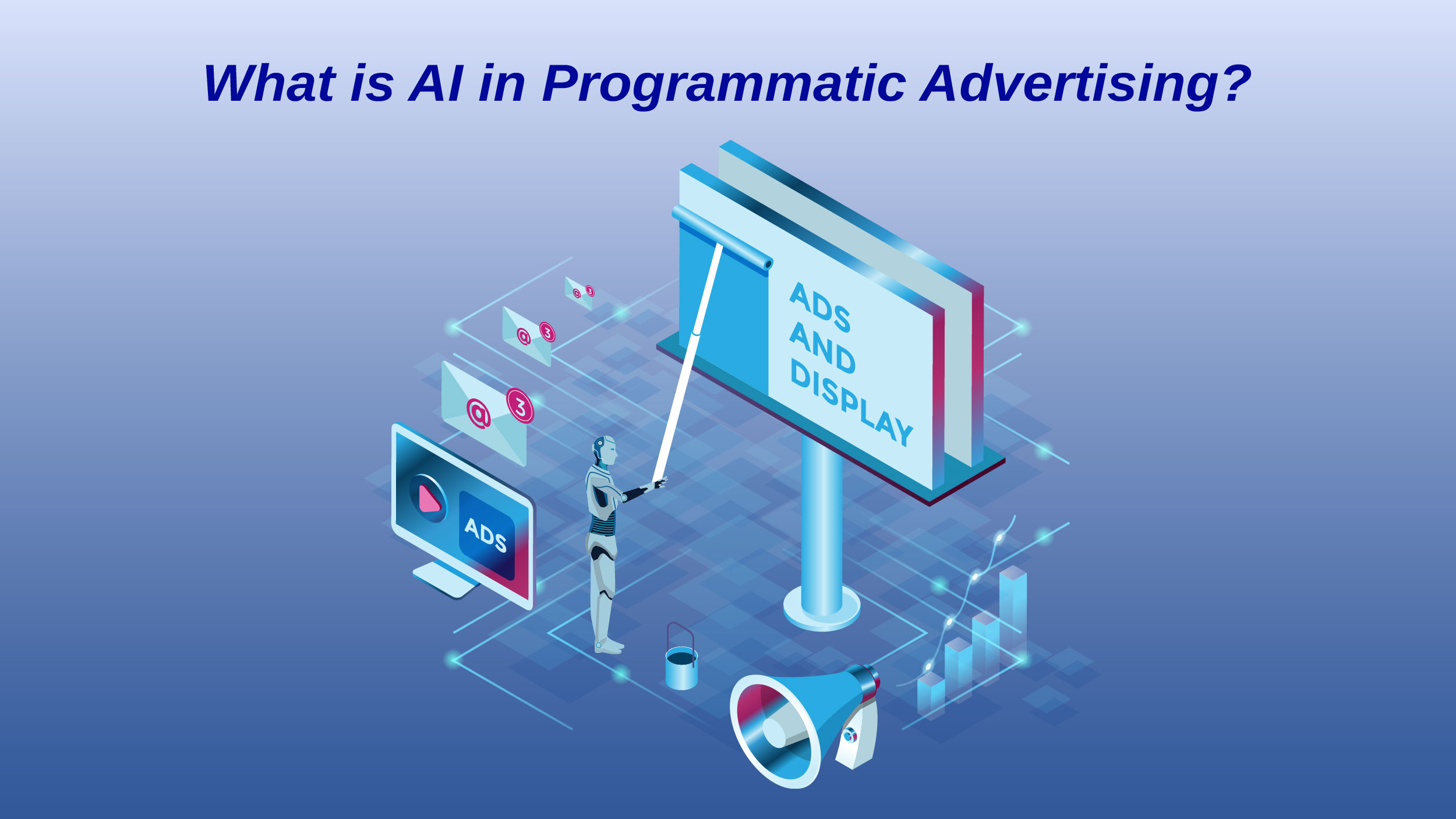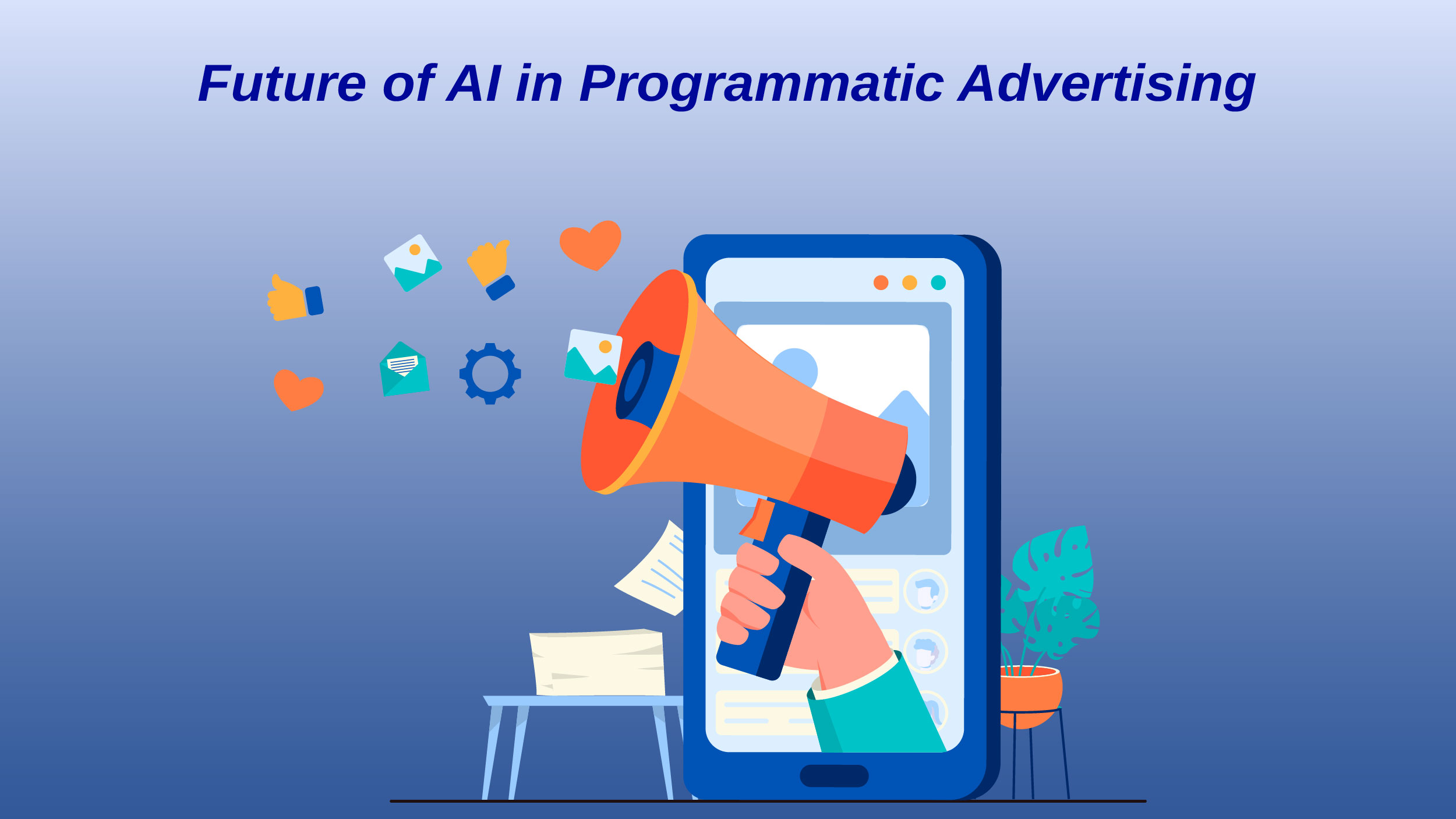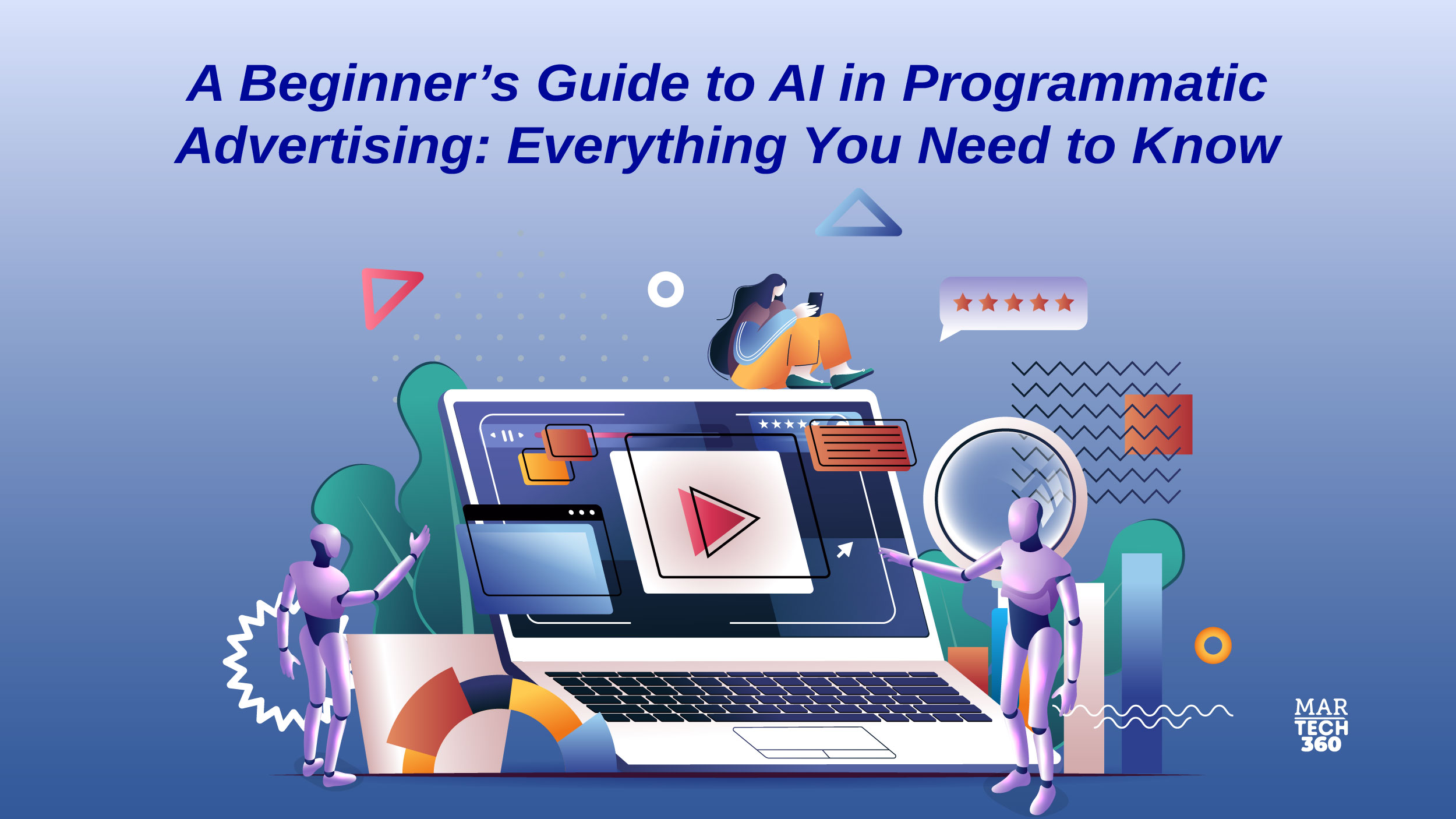Digital advertising has become increasingly popular as the preferred advertising method. With a vast number of individuals owning digital devices, it’s no surprise that digital advertising has taken massive leaps in the past few years. Predictions suggest that more than 320 million people in the US will own smartphones by 2025. Americans are gradually transitioning from traditional media to digital media consumption. The average daily digital media usage in the U.S. is projected to rise from 439 minutes in 2022 to nearly eight hours by 2025.
According to recent research by Statista, the U.S. is the largest programmatic ad market globally. Estimates even project that programmatic ad spending in the country could exceed the $725 billion mark by 2026. This is exactly why AI in programmatic advertising is garnering massive attention worldwide.
What is AI in Programmatic Advertising?
 AI in programmatic advertising refers to the use of artificial intelligence (AI) technologies and algorithms in the automated buying and selling of advertising space. Programmatic advertising is an auction-based system that allows advertisers and publishers to optimize their results by leveraging AI capabilities.
AI in programmatic advertising refers to the use of artificial intelligence (AI) technologies and algorithms in the automated buying and selling of advertising space. Programmatic advertising is an auction-based system that allows advertisers and publishers to optimize their results by leveraging AI capabilities.
AI plays a crucial role in programmatic advertising by enabling personalization, improving targeting, and optimizing campaign performance. Machine learning algorithms used in AI can adapt and learn from new patterns encountered in real time, making them well-suited for the dynamic nature of programmatic advertising. These algorithms can process large datasets quickly, influencing various aspects of programmatic advertising.
Some of the top AI programmatic advertising tools are MarketMuse, SEMrush, Optimove, and Albert, among others.
Application of AI in Programmatic Advertising
In the realm of programmatic advertising, AI has become a game-changer by handling complex data tasks that were once done manually. While human insights remain vital for campaign design and execution, AI takes on the heavy lifting, contributing to more efficient ad placements and targeting. It also plays a key role in conducting thorough data-driven analysis and optimizing campaigns.
Machine learning algorithms, powered by AI, work in the background to optimize data across various dimensions. These dimensions include ad format, ad environment, browser, device type, fold placement, geography, operating system, supply vendor, private contract, and site/app. By optimizing these factors, advertisers can enhance efficiency, achieve campaign key performance indicators (KPIs), and benefit from transparent reporting.Programmatic advertising leverages AI to craft effective audience segments aligned with campaign goals, ensuring ads reach users with a higher conversion likelihood. The algorithms selectively segment the audience to enhance campaign performance, measuring and eliminating segments that don’t contribute positively. Moreover, AI-powered programmatic ads dynamically adjust digital creatives to display relevant content based on web page context, user signals, and intent.
Also Read: Sales Analytics Software: Your Ultimate Guide for Strategic Business Growth
Future of AI in Programmatic Advertising
 Given below are the top seven AI trends in the programmatic advertising industry anticipated to sweep the internet in the coming years.
Given below are the top seven AI trends in the programmatic advertising industry anticipated to sweep the internet in the coming years.
Generative AI Advancements
- Generative AI, driven by machine learning, automates ad creation and testing, facilitating rapid iteration at the persona level.
- Advertisers need to address brand safety concerns arising from easy ad mimicry, emphasizing the importance of original content creation.
- Learning advanced prompting techniques becomes crucial for advertisers to maximize generative AI’s originality.
Mass Personalization
- Generative AI enables mass personalization, automating the creation of personalized content without manual intervention.
- The technology leverages large datasets, enhancing content relevance for individuals and contributing to improved personalization accuracy.
Enhanced Targeting with AI
- AI and machine learning play a pivotal role in refining programmatic advertising targeting, utilizing demographic, browsing behavior, and interaction data.
- Continuous refinement through machine learning algorithms enhances programmatic media buying, with future advancements expected to further refine and streamline targeting.
AI in Campaign Planning
- AI is increasingly utilized in the campaign planning phase, helping advertisers align with outcomes that were previously challenging to attain.
- Its role is expected to expand as advertisers leverage AI for more efficient data parsing and quicker delivery of campaign objectives.
Quality Assurance Improvement
- AI contributes to enhanced quality assurance by identifying outliers and potential errors in systems and platforms used by advertisers.
- Detection of issues before they escalate improves the overall reliability and performance of advertising processes.
Enhanced User Privacy
- Concerns around user privacy, particularly with new rules on personally identifiable information (PII), drive the use of natural language processing.
- Identifying customer sentiment and journey enables cohort or topic-based targeting while complying with evolving privacy regulations.
Addressing Ethical Concerns
- Rapid AI advances prompt ethical considerations, necessitating responsible handling of user data, privacy compliance, and consent.
- Industry guidelines and regulations will evolve to strike a balance between personalization and user privacy, with efforts to address algorithmic biases and enhance transparency in automated processes.
Winding Up
Despite the efficiency of AI in processing data, the human touch is irreplaceable in marketing and advertising. These industries require human emotions like compassion, empathy, and storytelling. AI lacks the understanding of these dynamics and the unpredictability of human emotions. We still need real people to analyze AI’s results and consider the nuances of dealing with human emotions.
The future of digital advertising, particularly the realm of AI in programmatic advertising, holds exciting prospects. Artificial intelligence, machine learning, and natural language processing are all tools that assist us as humans in our work. While some tasks may be automated, there will always be jobs that rely on human thinking. The goal is a collaborative future where AI and humans work together harmoniously.


Comments are closed.